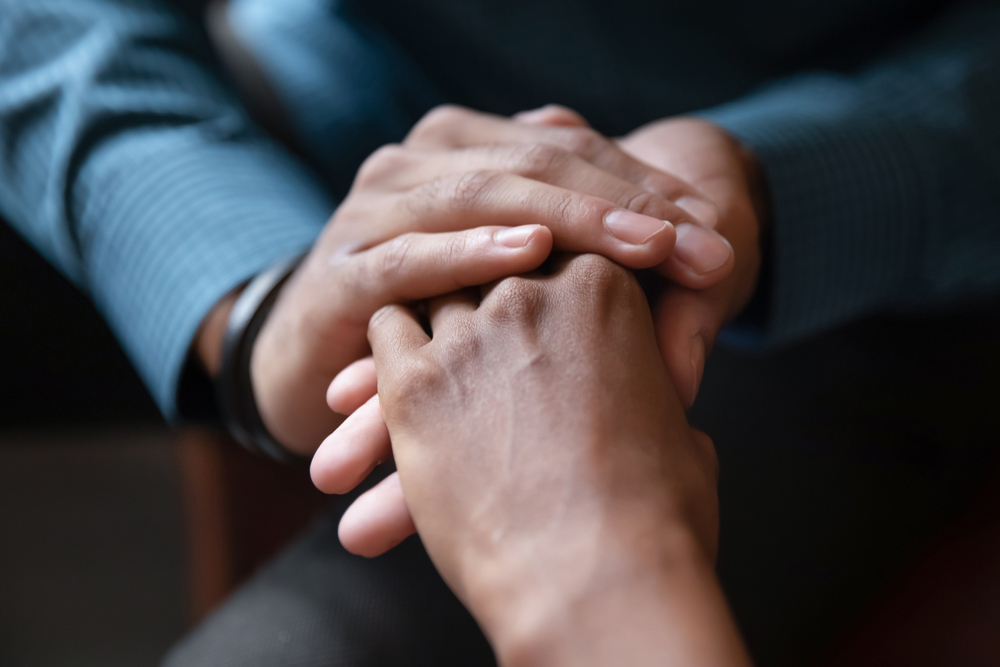How Attachment Styles Influence Accountability in Relationships
Because love isn’t just about connection—it’s about how we take responsibility when things feel hard. Let’s dive into the anxious avoidant dynamic.
Have you ever felt like you’re always the one reaching out, asking for reassurance, wanting more closeness—while your partner pulls away, avoids the conversation, or seems emotionally distant?
Or maybe you’ve been on the other side—feeling smothered by expectations, craving space, not sure how to respond when your partner’s emotions feel overwhelming.
That push-pull pattern isn’t just a coincidence. It often reflects what’s known as the anxious avoidant dynamic, one of the most common attachment patterns in relationships—and one that has a big impact on how accountability is handled (or avoided).
At ValueCore, we help couples explore these dynamics in a gentle, non-blaming way. Because the truth is, neither person is “the problem.”
The dynamic is.
And when we understand how our attachment styles influence our reactions, we can begin to show up differently—for ourselves and each other.
Let’s take a closer look at how the anxious avoidant dynamic plays out in real relationships, especially when it comes to accountability, repair, and emotional safety.
What is the dynamic between anxious and avoidant?
The anxious avoidant dynamic happens when one person in the relationship has an anxious attachment style, and the other has an avoidant style. It’s not always obvious at first, but over time, the cycle becomes familiar.
The anxious partner tends to seek closeness, reassurance, and emotional engagement. They may feel unsafe when things feel distant or unspoken. When conflict arises, they want to talk it through, quickly and thoroughly.
The avoidant partner tends to value space, independence, and emotional regulation. When conflict arises, they often shut down, withdraw, or become overwhelmed by intensity. They may feel unsafe when things feel too emotionally charged.
So what happens?
One person pursues, and the other retreats. The more the anxious partner seeks connection, the more the avoidant partner pulls away. And the more the avoidant partner retreats, the more anxious the other becomes. Round and round it goes.
In terms of accountability, this dynamic can create major friction. The anxious partner may feel like they’re always trying to talk things through, but their partner won’t engage. The avoidant partner may feel like they’re constantly being blamed or pressured, which makes them even more likely to avoid.
No one wins in this cycle. And both people end up feeling misunderstood, defensive, or alone.
How to fix avoidant anxious dynamic?
Here’s the good news: the anxious avoidant dynamic isn’t a life sentence. It’s a pattern—and patterns can change.
But fixing it doesn’t mean fixing your partner. It means understanding your role in the cycle and making small shifts that create safety instead of escalation.
For the anxious partner, this might mean:
- Slowing down before pushing for resolution
- Grounding yourself when you feel the urge to over-explain or chase
- Focusing on what you need, not what your partner “should” be doing
For the avoidant partner, this might mean:
- Staying present a little longer than feels comfortable
- Naming when you need a break, without disappearing
- Practicing vulnerability in small, consistent ways
Both people also need to recognize that accountability looks different depending on your attachment lens.
Anxious partners often take on too much responsibility—apologizing for everything, even when it’s not theirs to carry. Avoidant partners may struggle to take ownership at all, especially if they’ve learned that vulnerability leads to conflict or rejection.
Repair starts when both people soften. When both learn to say, “Here’s what I’m noticing in myself,” rather than, “Here’s what you’re doing wrong.”
Therapy can be incredibly helpful for this. At ValueCore, we support couples in naming their attachment patterns with compassion and creating new ways to connect that don’t feel like emotional whiplash.
How to date someone with anxious-avoidant attachment?
Dating within the anxious avoidant dynamic can feel like whiplash—intense connection followed by sudden withdrawal, moments of closeness followed by emotional shutdown.
If you’re dating someone with this attachment pattern, here are a few things to keep in mind:
- Don’t take their withdrawal personally. Avoidant partners often pull back when they feel overwhelmed—not because they don’t care, but because that’s how they’ve learned to cope.
- Communicate your needs calmly and clearly. Avoidant partners tend to respond better when they feel like they have space to show up—without pressure or panic.
- Set boundaries around what you need emotionally. It’s okay to ask for consistency, communication, and follow-through. And it’s okay to walk away if those needs aren’t being met over time.
- Focus on your own nervous system regulation. The more grounded you are, the less likely you are to trigger their defenses—or lose your own center in the process.
You don’t have to walk on eggshells. But you also can’t control how someone else processes closeness, especially if they’re not aware of their patterns. That’s where therapy and self-work come in—for both of you.
How to communicate with an anxious-avoidant?
Communication within the anxious avoidant dynamic requires patience, awareness, and a lot of gentleness.
Avoidant partners often feel emotionally flooded when conversations get intense. They may need more time to process or may struggle to find the words for what they’re feeling. This doesn’t mean they’re cold—it means they’ve learned to protect themselves through emotional distance.
If you’re trying to communicate with someone who leans avoidant, here are some helpful shifts:
- Use “I” language instead of “you always” or “you never”
- Offer reassurance that the goal is connection, not blame
- Avoid pushing for immediate resolution—ask when would be a good time to talk
- Make space for their emotions, even if they’re quiet at first
At the same time, the avoidant partner needs to stretch toward the relationship. That might mean practicing more emotional presence. Offering words of validation, even when it’s hard. Saying, “I care about you—I just need a moment,” instead of shutting down completely.
Communication is a two-way street. And in the anxious avoidant dynamic, both people need to learn how to navigate each other’s nervous systems with care.
Final Thoughts
Healing the Dynamic Means Changing the Dance
The anxious avoidant dynamic is so common—and so painful—because it’s built on two people trying to feel safe in opposite ways.
One reaches in.
One pulls away.
And neither is doing anything “wrong.” They’re both protecting something vulnerable.
But protection isn’t the same as connection. And when you’re ready to move toward something deeper, that starts with emotional accountability.
Not blame. Not shame. But the willingness to say:
“I see my part. I want to do this differently.”
At ValueCore, we believe you’re not too much. You’re not too distant. You’re just in a pattern. And that pattern can be transformed—with understanding, with support, and with love that doesn’t demand perfection.
You’re not alone in this. You’re allowed to learn new ways to love—and be loved—without fear.

